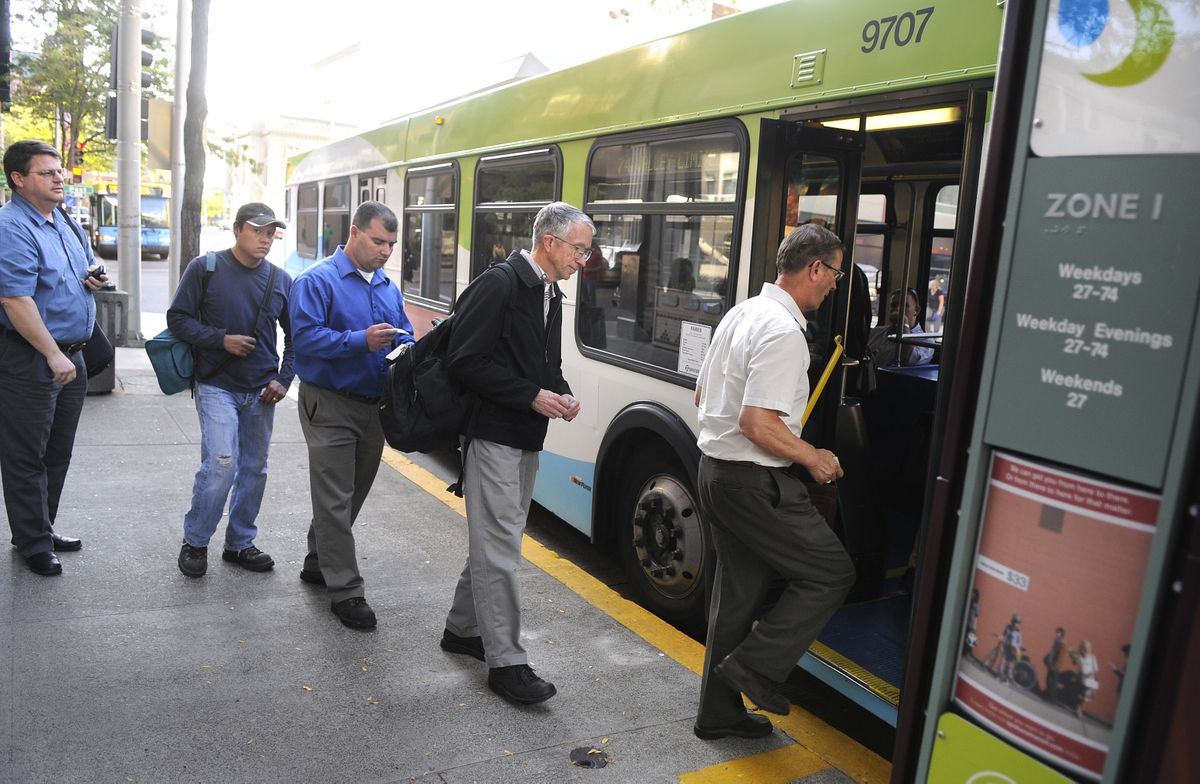An attractive alternative

Bus ridership in Spokane is taking off.
Riders are reporting full buses, some with standing room only on many of the busiest routes, including the increasingly popular expresses serving the North Side and Spokane Valley.
“Leaving downtown to Hillyard, it’s packed,” said Justine Fry, a high school student commuter.
The numbers back her up.
Boardings this year are up 18 percent through July.
The jump comes after ridership growth in 2006 and 2007. By year’s end, the overall increase since 2005 is likely to reach 40 percent.
While riders say fuel costs are a factor in their decision to climb aboard, STA officials say there’s more to the story: A reorganization that started six years ago has resulted in a more convenient system with better customer service, helping to boost ridership increases above the national average of about 5 percent.
The reorganization also boosted public confidence, leading voters to approve a temporary sales tax increase in 2004 and renewing that 0.3-cent increase as a permanent tax in May.
Outreach efforts have gained momentum, said Susan Meyer, chief executive officer for Spokane Transit Authority.
“We have worked really hard over the last couple of years to make the system desirable to folks who have never used it before, primarily commuters,” she said.
New express routes, wireless Web connections, an online trip planner, improved public relations, “smart card” debit cards and new pass programs are persuading more first-timers to board the bus, she said.
One of those first-timers was Darrell Reeves, the chief financial officer at Greater Spokane Inc., who started commuting by express bus from Liberty Lake’s park-and-ride lot to the downtown Plaza in late June. His employer pays for his $33 monthly pass while he saves between $300 and $400 a month on gas and parking, not counting wear and tear on his pickup, which gets 19 miles per gallon.
His fellow riders have proven friendly, he said. “When I get on the bus in the morning, it’s like a big party.”
Spokane City Councilman Al French, an STA board member, said he likes the way bus drivers are helping people find their way around the system. “The bus drivers are friendly, courteous,” he said.
The changes at STA grew out of a financial crisis brought on when state voters in 1999 slashed the motor vehicle excise tax, removing one of the agency’s major funding sources at the time. Faced with potential cuts, STA unsuccessfully asked voters to raise the local sales tax for transit in 2002.
That’s when French, who served as board chairman in 2003, and others went to work redesigning the system with public input.
For his efforts, French was named board member of the year recently by the American Public Transportation Association. STA also has won a “success in ridership” award from the Federal Transit Administration.
But success has come with challenges. STA supervisors are juggling buses to make sure busy routes don’t get too crowded. They frequently dispatch extra buses when passenger loads reach capacity. They don’t want many riders standing for long periods for fear they’ll stop riding, but so far, STA hasn’t had to increase route frequency.
And high fuel costs along with the struggling economy are affecting the STA budget. Expenses are up, while revenue – most of which is derived from sales taxes – is down. A citizen advisory committee is considering fare increases in coming months.
Still, the old image of STA – with nearly empty buses touring the city – has virtually disappeared, French said.
Vickie Russell, a rider who lives on the North Side, said some routes are usually full.
“The Division bus is always busy. It’s always got a lot of people on it,” she said.